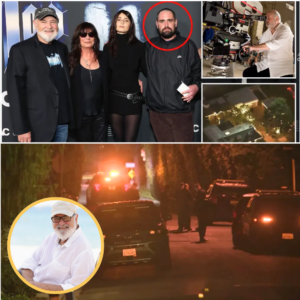In the glittering yet precarious world of Hollywood, where dreams are scripted and stars are born under the relentless glare of spotlights, a new kind of performer has slithered into the frame – one not forged in the fires of auditions and heartbreak, but in the cold algorithms of artificial intelligence. Meet Tilly Norwood, the AI-generated “actress” whose pixel-perfect poise and scripted charm have ignited a firestorm of controversy, prompting the powerful Screen Actors Guild-American Federation of Television and Radio Artists (SAG-AFTRA) to issue a resounding declaration: “Creativity is, and should remain, human-centered.” This isn’t just a skirmish over casting calls; it’s a seismic clash between the irreplaceable spark of human artistry and the inexorable march of technology that threatens to rewrite the rules of show business.
The saga unfolded dramatically over a sun-drenched weekend in late September 2025, when whispers from the Zurich Film Festival turned into a roar. Eline van der Velden, a Dutch comedian, writer, and tech-savvy innovator at the helm of Particle6 Productions, took the stage to unveil her latest creation. Tilly Norwood isn’t your average CGI sidekick or deepfake stunt double; she’s a fully realized digital persona, complete with shoulder-length brown hair, soulful brown eyes, a crisp British accent, and an Instagram feed brimming with aspirational selfies. Van der Velden, who launched Tilly on social media platforms like TikTok, Instagram, and YouTube over the summer, revealed that multiple high-profile talent agencies – those gatekeepers of stardom from the likes of CAA and WME – were circling, eager to ink deals and propel this synthetic sensation into films, TV shows, and beyond. “We’re announcing which agency is going to represent her in the next few months,” van der Velden teased, positioning Tilly as the “next Scarlett Johansson or Natalie Portman.” It was a bold pitch, one that blended innovation with provocation, and it landed like a grenade in Tinseltown.
For many in Hollywood, the reaction was swift and visceral. The idea of an AI entity – trained on vast datasets of real human performances, scraped without consent or compensation – being fast-tracked for representation felt like a betrayal of the craft. SAG-AFTRA, the union representing over 160,000 performers, from A-list icons to background extras, wasted no time in firing back. In a statement released on Tuesday, September 30, the guild laid down the law with unflinching clarity: “To be clear, ‘Tilly Norwood’ is not an actor; it’s a character generated by a computer program that was trained on the work of countless professional performers – without permission or compensation. It has no life experience to draw from, no emotion, and from what we’ve seen, audiences aren’t interested in watching computer-generated content untethered from the human experience.” The words cut deep, echoing the raw authenticity that defines acting – the tremble of a lip in grief, the unscripted joy of a laugh, the scars of lived reality that infuse every line delivery.
This isn’t hyperbole born of fearmongering; it’s rooted in hard-won battles. Flash back to the summer of 2023, when SAG-AFTRA’s 118-day strike paralyzed Hollywood, costing the industry billions and amplifying global conversations about labor rights in the streaming era. At the heart of that walkout was AI – not as a futuristic fantasy, but as an immediate threat. Studios, hungry for cost-cutting efficiencies, eyed generative tools that could replicate voices, faces, and mannerisms with eerie precision. The strike’s landmark resolution? A contract mandating consent, compensation, and bargaining for any “synthetic performers.” Now, with Tilly Norwood, those protections are being stress-tested in real time. SAG-AFTRA reminded producers and agencies alike: “Hollywood producers should be aware that they may not use synthetic performers without complying with our contractual obligations, which generally require notice and bargaining whenever a synthetic performer is going to be used.” It’s a velvet-gloved warning wrapped in steel – ignore it, and face the wrath of organized labor.
The backlash has rippled far beyond union halls, drawing in a constellation of Hollywood heavyweights who see Tilly not as progress, but as peril. Emily Blunt, fresh off promoting her gritty wrestling drama The Smashing Machine alongside Dwayne Johnson, was ambushed on the Variety Awards Circuit podcast with a photo of the AI ingenue. Her response? A mix of horror and hilarity: “Good Lord, we’re screwed. That is really, really scary. Come on, agencies, don’t do that. Please stop. Please stop taking away our human connection.” Blunt’s plea underscores a deeper anxiety: in an industry already grappling with shrinking roles for women over 40, why hand the reins to a controllable digital doll? Whoopi Goldberg, ever the voice of unfiltered truth on The View, dismissed the notion outright: “You can always tell them from us.” She argued that AI lacks the soul – the “us” factor – that makes performances resonate.
Melissa Barrera, the scream queen from the Scream franchise, took to social media with a fiery thread, decrying the devaluation of diverse voices in an industry still reckoning with inclusivity. “This isn’t innovation; it’s exploitation,” she posted, tagging fellow actors in a call to arms. Kiersey Clemons, known for her luminous turn in The Flash, echoed the sentiment, sharing a meme juxtaposing Tilly’s flawless facade with the sweat-soaked auditions of real performers. Even Natasha Lyonne, the sharp-witted star of Poker Face and Russian Doll, issued a boycott ultimatum: “Any talent agency that engages in this should be boycotted by all guilds.” Her words carry extra weight; Lyonne is currently collaborating on an “ethical AI” project for a feature film that prioritizes human actors, proving technology can augment, not annihilate, creativity. Mara Wilson, the child star turned writer who voiced fears of AI in her 2023 memoir Where Am I Now?, added a poignant layer: “It’s not surprising the first major ‘AI actor’ is a young woman they can fully control – no opinions, no aging, no demands for equal pay.”
Van der Velden, undeterred, mounted a spirited defense on Instagram, framing Tilly as “a creative work – a piece of art,” not a human replacement. She described the process as akin to “drawing a character, writing a role, or shaping a performance,” emphasizing the months of iteration behind the illusion. Particle6 Productions, a nascent AI outfit founded just last year, positions itself as a bridge between tech and storytelling, with Xicoia – its new talent studio – aiming to soft-launch more digital talents. Yet critics, including skeptical voices on platforms like Reddit, smell hype over substance. “This firm has no plan to actually cast Tilly in a feature film,” one thread posited. “The technology doesn’t exist yet – they’re just drumming up buzz to get bought out.” It’s a reminder that for all its polish, Tilly is still embryonic: a viral video from July featuring 16 AI characters, but no blockbuster credits to her name.
Zooming out, this Tilly tempest is but the latest tremor in Hollywood’s AI earthquake. The 2023 strike may have secured safeguards, but the ground is shifting faster than negotiators can stomp. Biannual meetings between SAG-AFTRA and the Alliance of Motion Picture and Television Producers (AMPTP) now dissect AI’s evolution, ensuring compliance with federal regs. California’s Governor Gavin Newsom just inked legislation – with SAG-AFTRA’s testimony – bolstering performer rights against unauthorized likeness use. And at industry confabs like The Wrap’s Grill in Los Angeles, panels buzzed with Tilly talk: Is she a harbinger of doom or a tool for accessibility, enabling stories without the barriers of geography or disability?
Yet the human element persists as the unbreakable core. Sean Astin, the newly elected SAG-AFTRA president – yes, The Lord of the Rings‘ Samwise Gamgee himself – doubled down in a recent interview, vowing to address the issue in talks with the Association of Talent Agents. “We performers rely on our agents’ judgment and sincerity, and they rely on our talent and marketability,” Astin said. “The real issue is permissions and compensations for our work.” His lineage adds irony: son of the late Patty Duke, a union trailblazer who fought for mental health stigmas in the ’80s, Astin embodies the generational torch-passing against existential threats.
As October 2025 dawns, with leaves turning in the Hollywood Hills, the Tilly Norwood saga lingers like an unfinished scene. Will agencies seal the deal, thrusting AI into the multiplexes? Or will the collective roar of 160,000 voices – from Blunt’s terror to Goldberg’s scoff – preserve the sanctity of the silver screen? One thing is certain: in this digital deluge, the cry for human-centered creativity isn’t fading; it’s crescendoing. Audiences crave connection, not code – the flawed, fierce, unforgettable pulse of people. As van der Velden iterates her algorithms, Hollywood iterates its resolve: the show must go on, but with hearts at center stage. After all, in a world of simulations, nothing captivates like the real.

